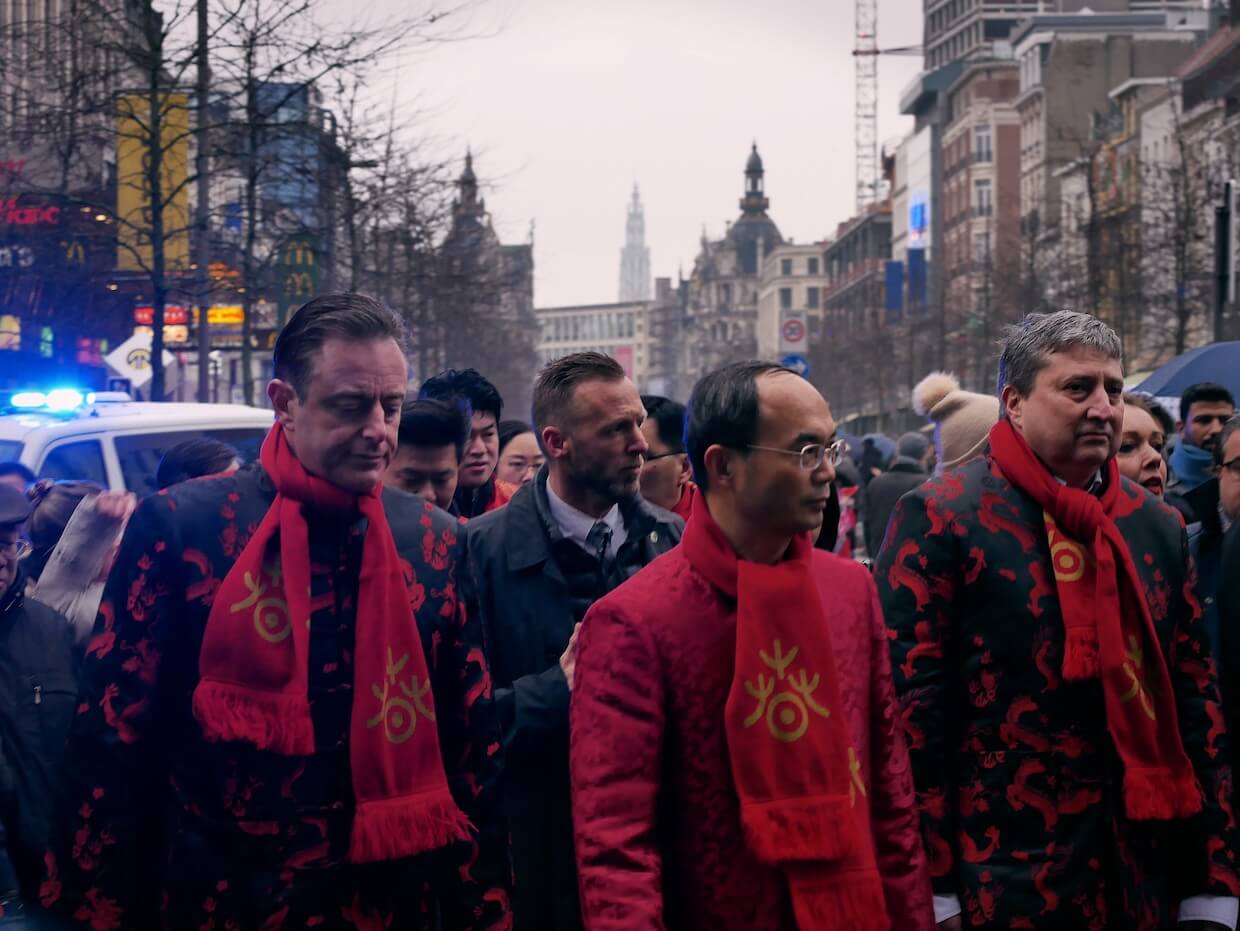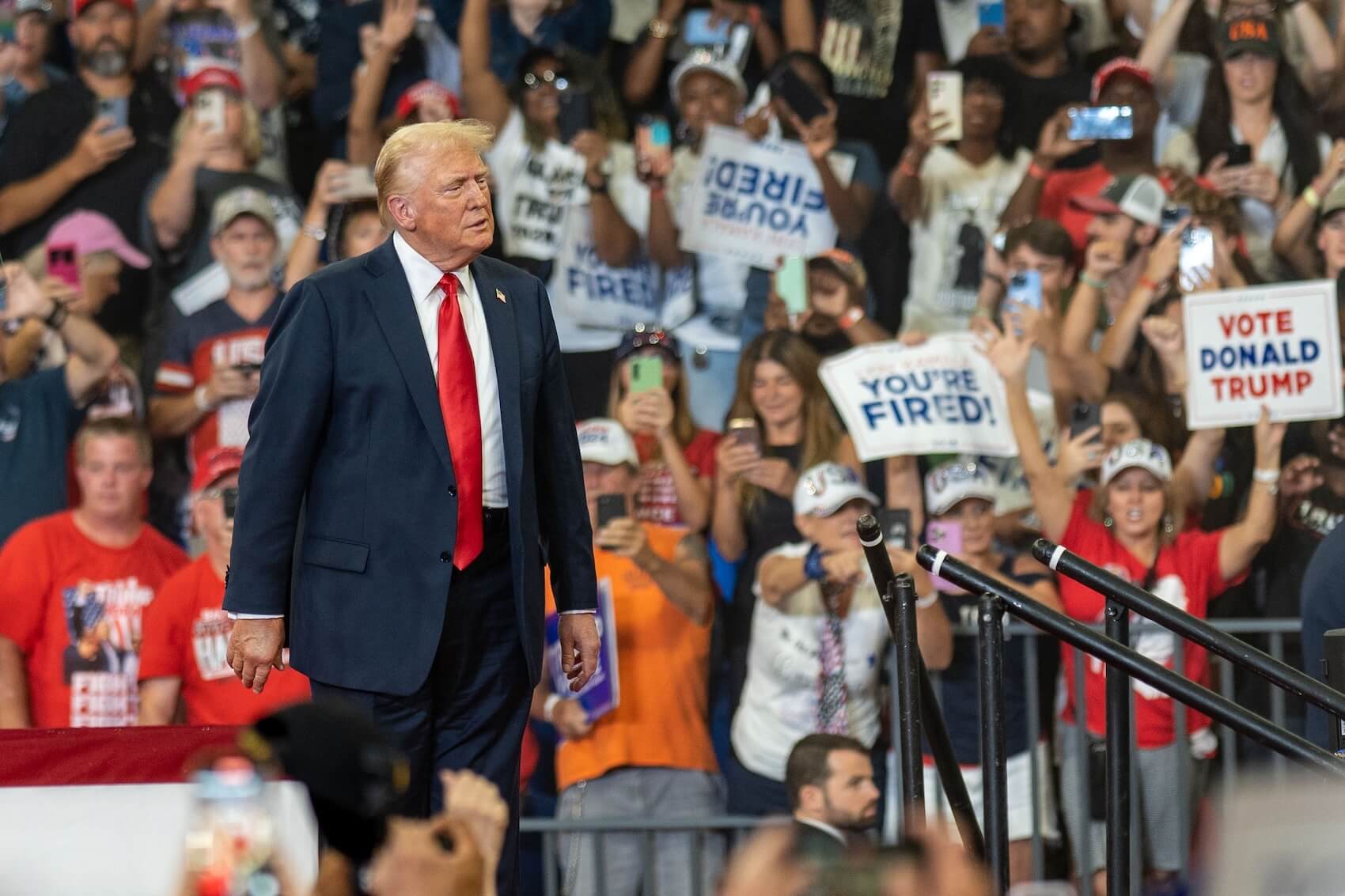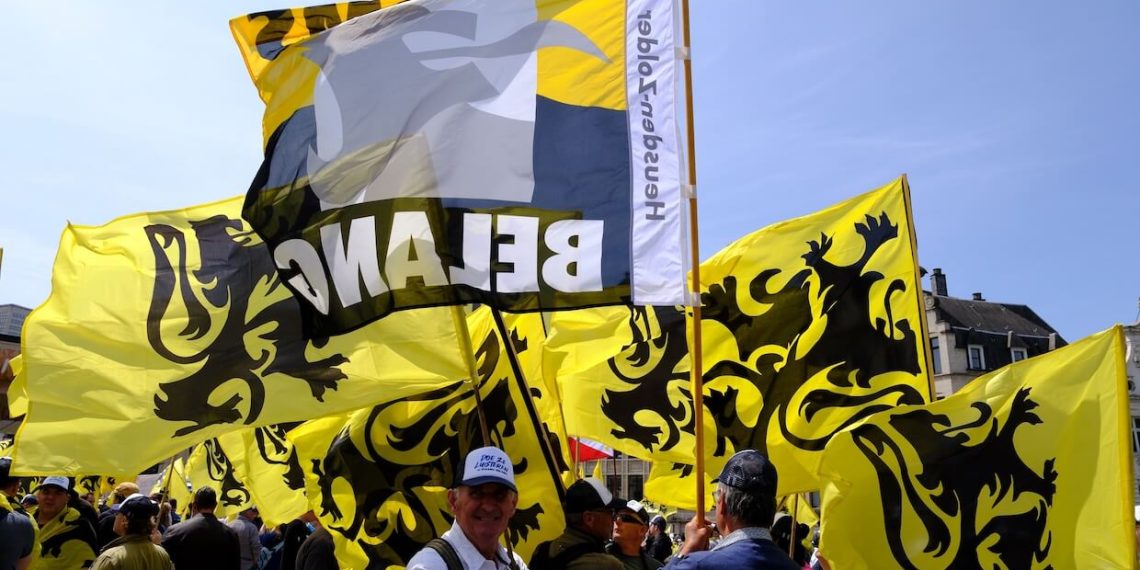Belgium’s long-standing reputation as a consociational democracy—marked by power-sharing, compromise, and consensus-building—is under strain. According to Dr. Emilie van Haute, the country’s political landscape has undergone a fundamental transformation, with growing polarization and the increasing influence of populist radical parties. In this compelling interview with the ECPS, Dr. van Haute examines the rise of populism on both the left and right, the impact of linguistic divisions, and how mainstream parties are adapting to radical competition. She provides valuable insights into Belgium’s shifting democracy and the challenges ahead.
Interview by Selcuk Gultasli
Belgium has long been regarded as a model of consociational democracy, characterized by political compromise, power-sharing, and consensus-building. However, according to Dr. Emilie van Haute, Associate Professor of Political Science and Department Chair at SciencePo ULB, and researcher at Cevipol, this perception no longer reflects reality. “The habits of consensus democracy are slowly fading,” she warns. “That poses a significant challenge for future government formation and the stability of coalition governments.”
In an insightful interview with the European Center for Populism Studies (ECPS), Dr. van Haute explores the shifting dynamics of Belgian politics, particularly the rise of populist radical parties on both the left and the right. She highlights how political parties like Vlaams Belang (VB) and Parti du Travail de Belgique (PTB–PVDA) have capitalized on discontent and distrust in mainstream political institutions. “These are voters who feel alienated from the political system,” she explains. “They opt for radical parties not randomly, but because these parties align with their political priorities.”
Belgium’s linguistic and regional divisions further shape this political landscape. In Flanders, Vlaams Belang’s ethno-regionalist stance has gained traction by advocating for Flemish autonomy and opposing so-called “solidarity transfers” to the French-speaking south. In contrast, in French-speaking Belgium, populist momentum has been driven by the radical left, which prioritizes economic redistribution and national solidarity. These diverging political priorities contribute to a growing polarization within the country.
Mainstream parties have not remained immune to these shifts. As Dr. van Haute notes, they have increasingly adopted populist rhetoric and strategies in response to radical party successes. “Mimicking the radical right legitimizes their positions and facilitates their electoral success,” she observes, citing the New Flemish Alliance (N-VA) and the French-speaking Liberal Party (MR) as examples of this trend.
Looking ahead, Dr. van Haute sees Belgium at a crossroads. With growing affective polarization, the erosion of consensus politics, and populist parties gaining ground, the country faces an uncertain future. “It is difficult to govern with multiple coalition partners when parties are constantly engaging in antagonistic politics,” she warns.
In this thought-provoking discussion, Dr. van Haute dissects these pressing political challenges and reflects on the implications of populism, nationalism, and polarization in Belgium’s evolving democracy.

Here is the transcription of the interview with Dr. Emilie van Haute with some edits.
What Drives the Success of Populist Parties Is Discontent and a Lack of Trust in Mainstream Political Actors
Professor van Haute, thank you very much for joining our interview series. Let me start right away with the first question: What are the key similarities and differences between left-wing and right-wing populist parties in Belgium in terms of their ideology, voter base, and political strategies? How have economic, social, and cultural factors contributed to the rise of populist movements in Belgium, and how do these factors differ between the radical left (PTB–PVDA) and the radical right (Vlaams Belang)?
Dr. Emilie van Haute: That’s three broad questions. The commonality between the two radical forces is their protest appeal—their protest and populist appeal. You can clearly see in the voters they attract that this protest appeal is quite strong. So that’s the commonality because, otherwise, in terms of political positioning, they are at two opposite extremes. Politically, they are radically different. The radical right is positioned at the extreme right, both socioeconomically and culturally. Although we often hear that the radical right can sometimes have a blurred position on socioeconomic issues, that is not the case here. They are located at the right end of the political spectrum, whereas the radical left is on the left, both socio-economically and socio-culturally.
These two political forces are not identical when it comes to their political positions, but what they share is a protest appeal—protest against mainstream parties and the political system. That’s how they are similar and different.
Now, what drives their success is, again, discontent and a lack of trust in mainstream political actors, which generates discontent and protest. This strong protest appeal is where they find their success.
Now, why is it the radical right that attracts support in the north of Belgium (Flanders) and the radical left in the south (French-speaking Belgium)? It is because Belgium has two different party systems. On the Dutch-speaking side, the system is dominated by the mainstream right. When voters protest against the mainstream right, they turn to the clean or pure equivalent, which is the radical right. If they are not happy with the mainstream right, they shift to the radical right.
In contrast, in French-speaking Belgium, the dominant actor has been the Socialist Party, which is mainstream left. When voters are dissatisfied with the mainstream left, they turn to the alternative, which is the radical left. That is why these polarizing trends have occurred in Belgium.
The Evolution Over the Last Decade Has Clearly Been Toward More Polarization
How has Belgium’s political landscape changed over the last decade, especially in relation to the growing influence of Vlaams Belang (VB) and the Workers’ Party of Belgium (PTB–PVDA)? Looking at the historical trajectory, how have populism and populist parties developed over time? Would you classify sub-state nationalist parties such as N-VA, VB, and DéFI as populist movements?
Dr. Emilie van Haute: Okay, so the evolution over the last decade has clearly been toward more polarization—polarization of the political landscape due to the success of radical parties. The radical parties have pulled the party system to the extremes, and you can clearly see that voters are increasingly positioning themselves further away from the center. That is one of the most important developments.
The radical right has fluctuated over time. If you look at the electoral performance of Vlaams Belang, it has evolved. It was a party that saw a constant increase in its electoral performance throughout the 1990s until the early 2000s. Then, it reached a ceiling.
N-VA emerged as a mainstream right alternative for voters. At that time, Vlaams Belang started to lose voters to the benefit of N-VA because N-VA had a protest appeal and had not participated in the federal government. However, as soon as N-VA entered the federal government, it lost that protest appeal. Then, we saw a shift again—Vlaams Belang started to gain voters, and N-VA began losing voters. So there has been a back-and-forth dynamic in the Dutch-speaking political landscape between the mainstream right and the radical right. Right now, the radical right has regained the protest appeal and is once again on the rise.
On the French-speaking side, there has never been a successful radical right party, as I mentioned, because the radical left has embodied the protest appeal. The radical left has only gained traction in the last two or three federal elections, so it is a more recent phenomenon.
Now, regarding how to characterize these parties as radical or populist—clearly, Vlaams Belang and PTB–PVDA qualify as radical parties. Whether other parties have a populist component—essentially, a protest appeal—fluctuates over time. N-VA, at some point, had that protest appeal and, therefore, a populist component.
You can see that when the party first entered the federal coalition in 2014 and again more recently, its protest component dropped. It is really difficult for a party to be included in the government while maintaining a protest discourse. Once you are part of the establishment and making decisions, it becomes hard to continue criticizing decision-makers. As a result, N-VA has started to lose its protest and populist component.
Regarding DéFI, another regionalist party, it is a Brussels-based party that defends French speakers in Brussels. It has been part of coalition governments at the regional level for a long time and does not necessarily have a protest component in that context. However, when DéFI attempted to develop a branch in Wallonia, the other French-speaking region, it adopted a strong protest component because it was an emerging party and positioned itself against the existing political actors.
So, you can really see that parties tend to have a protest and populist component, particularly when they are in opposition and able to challenge the mainstream parties in their respective party systems.
Vlaams Belang and PVDA-PTB Share a Common Main Driver: Protest
What are the drivers of support for populist radical left and populist radical right parties in Belgium? How have protest attitudes and ideological considerations affected the recent election results of Vlaams Belang (VB) and Parti du Travail de Belgique (PVDA-PTB)?
Dr. Emilie van Haute: Clearly, these two parties share a common main driver: the protest component. Voters with a low level of political trust—trust in political institutions—have a higher probability of voting for these parties. Voters who are cynical toward the political system, those with a low level of political interest, and those who do not feel politically efficacious—meaning they do not believe they can change the political system—all exhibit attitudes that drive support for these two radical parties.
In a nutshell, these are voters who feel alienated from the political system and mainstream parties, leading them to opt for radical parties. However, they do not choose randomly; they also select protest parties that align with their political priorities.
These parties not only have a protest component but also offer specific political positions. In Flanders, voters who support Vlaams Belang are positioned on the right of the political spectrum and prioritize migration issues. These are protest voters who support a party that matches their political priorities but is more radical than the mainstream parties in power. Their vote is a protest against the governing mainstream parties—they seek specific policies, are disappointed by the ruling parties, and turn to more radical alternatives on the same issues.
In French-speaking Belgium, the pattern is similar. Protest voters tend to support radical left parties, but their vote is driven by positions on socioeconomic issues and left-wing economic policies.
Considering that radical-right parties like VB thrive in Flanders, whereas French-speaking populist radical-right parties struggle to gain traction, how does linguistic fragmentation impact the ideological positioning and success of populist radical parties in Belgium?
Dr. Emilie van Haute: In Flanders, Vlaams Belang is clearly an ethno-regionalist party—one that defends Flemish culture and interests and advocates for greater autonomy for Flanders. This is not the case in French-speaking Belgium.
The radical party that has the most traction there is a unitary party, meaning it has branches across the entire national territory, which is an exception in Belgium. Because of this unique characteristic—having branches in both Flanders and French-speaking Belgium—it is difficult for this party to advocate for regionalism. Instead, it emphasizes socioeconomic issues as its main priority and promotes national solidarity in socioeconomic redistribution.
So, in French-speaking Belgium, the radical party pushes for more national solidarity in socioeconomic matters, while in Flanders, Vlaams Belang advocates for more autonomy for the region. This dynamic is also one of the key polarizing debates in Belgium.
Ruling N-VA Is the Successor of a Former Ethno-Regionalist Party

A new government has just been announced in Belgium under the leadership of the New Flemish Alliance (N-VA), with Bart De Wever becoming the country’s first nationalist prime minister. How would you define the N-VA as a political party? Based on your research, how do you explain the party’s emergence and breakthrough, its organizational choices, ideological profile, prospects for survival, and potential trajectory following its first experience in government?
Dr. Emilie van Haute: N-VA is actually the heir of a former ethno-regionalist party, Volksunie. So it is not necessarily a completely new party. It has existed in its current form since 2001 but is the successor of Volksunie, a party that emerged in 1954. In that sense, it is a "new party with old roots."
This historical background is important to understand because, as a "new" party, it was able to establish its organization based on existing party branches. As a result, it quickly developed territorial anchorage, which is extremely important for party survival. This is one of the reasons why N-VA was able to establish itself and survive more easily than other new parties.
N-VA positions itself on the right wing of the political spectrum, both socioeconomically and culturally. Initially, the party performed poorly in elections and had to form an alliance with the Christian Democrats in Flanders. That alliance was crucial—it not only helped the party survive electorally but also allowed it to present itself as a protest party. While allied with the Christian Democrats, N-VA distinguished itself as a more radical alternative, particularly on linguistic issues, refusing to compromise on certain key positions.
This stance appealed to voters, particularly those who had previously supported Vlaams Belang. Some of these voters saw N-VA as a "purer" party on linguistic issues while also being more embedded in the political system, giving it a chance to participate in government—something Vlaams Belang could not do due to the cordon sanitaire. As a result, some former Vlaams Belang voters decided to support N-VA, seeing it as a viable alternative that could both enter government and maintain strong, radical positions.
N-VA built its position on this foundation. From the start, it participated in power at the regional level, gaining coalition government experience in Flanders. It also joined the federal government once, between 2014 and 2019. Therefore, it is not an inexperienced party; it has both governmental experience and a strong party organization.
These elements—its historical roots, organizational strength, and governmental experience—are crucial for its survival. N-VA is a party that is well-established and is likely to remain a key player in Belgian politics for the long term.
As you mention in your articles, the Flemish Nationalist Party N-VA is a relatively young or newly established party. How do you account for its success, and what internal and external dynamics have contributed to its rise? Given the N-VA’s evolution from a regionalist successor party to a dominant force in Belgian politics, what insights can be drawn about the adaptability and trajectory of nationalist and populist radical-right movements?
Dr. Emilie van Haute: So, N-VA is, as we mentioned, an "old-new" party, established in 2001 with roots in a former ethno-regionalist party. The way it developed was by not becoming a single-issue party. While regionalist issues were central, they were not enough to gain electoral traction. So, the party embedded its ethno-regionalism into socioeconomic issues.
They started developing a socioeconomic program that is conservative—but it is conservative ethno-regionalism, emphasizing the idea of rewarding workers, the workforce, and economic dynamism. However, behind this rhetoric, the underlying message is about rewarding Flanders. Since Flanders has a higher active workforce than French-speaking Belgium—where more people rely on unemployment benefits—N-VA framed its policies as a way to reward Flanders.
This allowed them to combine the two core issues, presenting economic conservatism as a means to defend Flemish interests and stop what they call "solidarity transfers" to unemployed French speakers in the rest of the country. By intertwining these themes, they managed to appeal to a broader electoral audience.
The Habits of Consensus Democracy Are Slowly Fading in Belgium

Belgium has traditionally been regarded as a classic example of a consociational or consensus democracy. How does this political system influence the opportunities and constraints faced by populist parties, and in what ways have these parties adjusted to Belgium’s intricate institutional structure? In the light of the N-VA’s electoral success and the growing support for Vlaams Belang (VB), do you believe this characterization still accurately reflects Belgium’s political landscape?
Dr. Emilie van Haute: No. Consensual democracies—and Belgium has been an ideal type of consensus or consensual democracy—are characterized by cooperation and compromise. However, you can clearly see, first in Flanders, growing antagonisms, and this is partly driven by N-VA. I would say N-VA, even more than Vlaams Belang, plays a very antagonistic game and does not necessarily adhere to the consensus logic, which has, of course, an effect on voters. Increasingly, we see more polarization among voters in Flanders than in French-speaking Belgium.
However, a similar trend is emerging in French-speaking Belgium, partly due to the radical left, but also increasingly among conservatives. The French-speaking Liberals are starting to play a role similar to the one N-VA has played in Flanders. You can see that the conservative party in French-speaking Belgium is beginning to adopt a more antagonistic stance.
The habits of consensus democracy are slowly fading, and I think this poses a significant challenge for future government formation and the stability of coalition governments. It is difficult to govern for four to five years with five coalition partners if parties are constantly engaging in antagonistic politics. This is becoming an increasingly significant challenge, and we have already seen that government formation and coalition stability have become more difficult due to the gradual erosion of Belgium’s consensus democracy.
How has affective polarization been instrumental in Belgian elections and in the success of populist parties? How do you think separatist politics will be influenced by the victory of N-VA?
Dr. Emilie van Haute: We have seen affective polarization present in Belgium, more so in Flanders than in French-speaking Belgium. This is due to the presence of parties like Vlaams Belang and N-VA in Flanders, which polarize the electorate into groups that do not necessarily like each other. However, we are also starting to see the same trend emerging in French-speaking Belgium.
Affective polarization is present, though not as strongly as in other representative democracies. It is still at a lower level compared to many other countries, but it is a clear sign of the vanishing consensus. There is a growing dislike between electorates from different parties.
I believe this is a self-reinforcing cycle: parties antagonize, leading to more polarized voters. As voters become more polarized, parties have less incentive to seek consensus, further fueling the cycle.
‘Contamination Effect’ of Populist Parties on Mainstream Political Discourse
Given the indirect "contamination effect" of populist parties on mainstream political discourse, how has their presence impacted traditional parties in Belgium? Have mainstream parties adopted elements of populist rhetoric or policies in response?
Dr. Emilie van Haute: Clearly, the answer is yes. The way mainstream parties react to their radical competition is through imitation.
In Flanders, the mainstream right—primarily N-VA and, to a lesser extent, the Christian Democrats and the Liberals (Open VLD)—has adopted some of the rhetoric of the radical right. N-VA, in particular, made migration a highly salient issue when they were in power at the federal level between 2014 and 2019. In fact, they exited the government before the end of the legislature over migration issues. Research shows that mimicking the radical right tends to legitimize their positions and facilitate their electoral success. So, in Flanders, there is clear evidence of mainstream parties adopting the radical right’s rhetoric, effectively mainstreaming their positions.
In French-speaking Belgium, the Socialist Party, which was the dominant mainstream left party and was challenged by the radical left, also adopted more radical positions on socioeconomic issues. The presence of radical parties has led to polarization across the political spectrum.
Additionally, in French-speaking Belgium, there has been a rightward shift of the Liberal Party (the conservative party). When faced with strong competition from the Socialist Party and the Workers’ Party on the left, the Liberal Party moved further to the right to engage in the same antagonistic dynamic. This has contributed to a clear polarization of the political landscape.
The Main Challenge for Belgian Politics Is the Adoption of a ‘Trump 2.0’ Version by Mainstream Parties

How do Belgian populist parties engage with European politics, particularly in relation to the European Union and broader transnational populist networks?
Dr. Emilie van Haute: Clearly, regarding the European Union, it is easy for these parties to adopt an anti-EU rhetoric, engaging in "Europe bashing" to highlight various issues they want to make salient. This is a commonality between the radical right and the radical left—both hold Eurosceptic views and positions.
That being said, there are links with transnational movements of the same kind. For instance, there are connections between Vlaams Belang and other populist radical-right parties in Europe, although these relationships can be somewhat of a love-hate dynamic. Coordinating among these parties is not always easy because, while they advocate for their national interests, promoting international collaboration can sometimes create tensions.
On the left, the radical-left party has strong ties with other radical-left parties in Europe. This collaboration is well-established and has existed for a long time, making it relatively easier to maintain.
Overall, Belgian populist parties exhibit Euroscepticism while still engaging in some forms of transnational collaboration.
And lastly, Professor van Haute, how do you think populist parties in Belgium will be affected by the second Trump administration in the US?
Dr. Emilie van Haute: I am less concerned about the impact on populist radical parties than on how mainstream parties will be affected. That is my main fear. We are already seeing conservative parties—both N-VA and MR, on the Dutch- and French-speaking sides, respectively—adopting some of the strategies and rhetoric of early Trump, perhaps resembling Trump in 2016. The question is whether they will move toward adopting a "Trump 2.0" version. The main concern is not necessarily the radical parties that remain in opposition. Rather, the challenge lies in governing parties increasingly adopting radical rhetoric. That is the main challenge.


